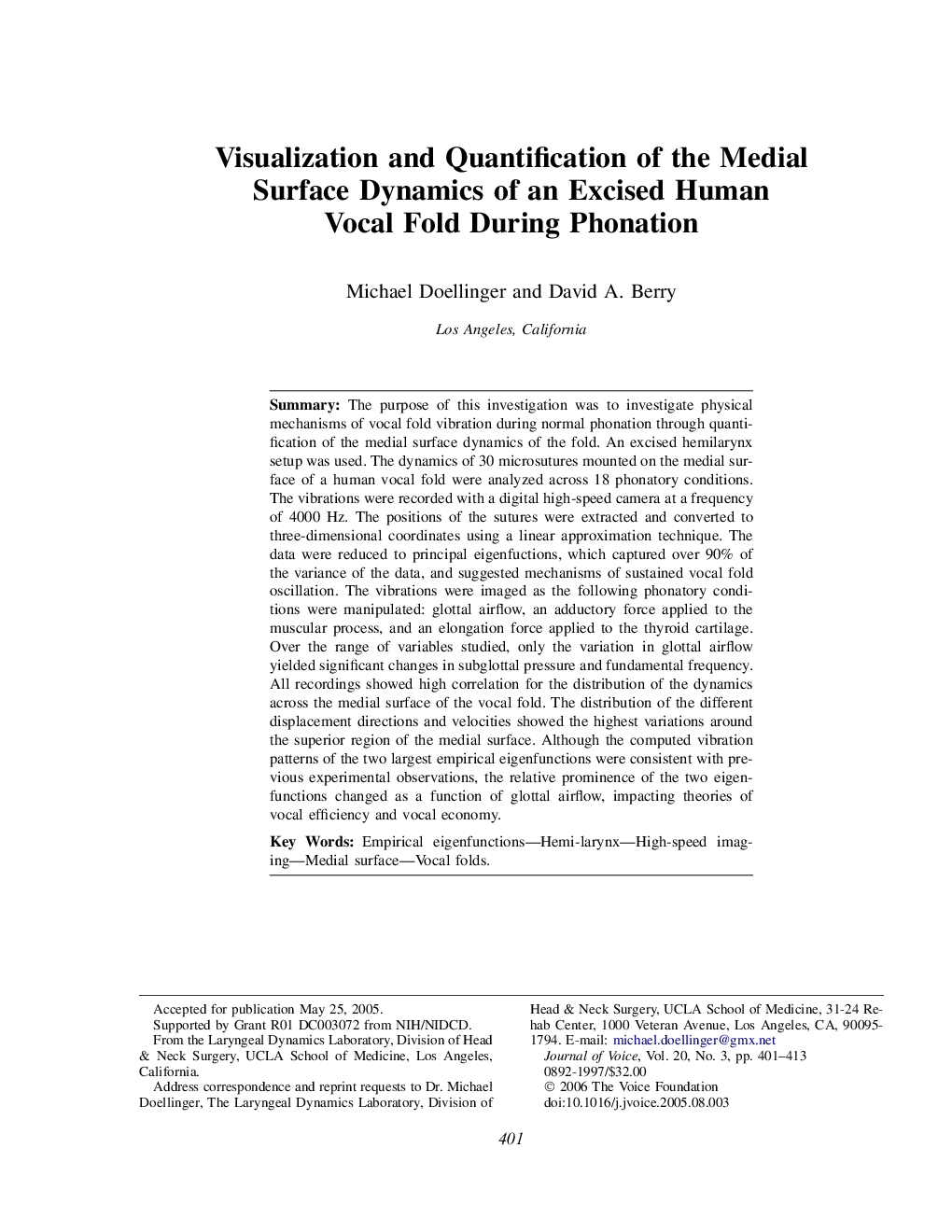| Article ID | Journal | Published Year | Pages | File Type |
|---|---|---|---|---|
| 1102815 | Journal of Voice | 2006 | 13 Pages |
SummaryThe purpose of this investigation was to investigate physical mechanisms of vocal fold vibration during normal phonation through quantification of the medial surface dynamics of the fold. An excised hemilarynx setup was used. The dynamics of 30 microsutures mounted on the medial surface of a human vocal fold were analyzed across 18 phonatory conditions. The vibrations were recorded with a digital high-speed camera at a frequency of 4000 Hz. The positions of the sutures were extracted and converted to three-dimensional coordinates using a linear approximation technique. The data were reduced to principal eigenfuctions, which captured over 90% of the variance of the data, and suggested mechanisms of sustained vocal fold oscillation. The vibrations were imaged as the following phonatory conditions were manipulated: glottal airflow, an adductory force applied to the muscular process, and an elongation force applied to the thyroid cartilage. Over the range of variables studied, only the variation in glottal airflow yielded significant changes in subglottal pressure and fundamental frequency. All recordings showed high correlation for the distribution of the dynamics across the medial surface of the vocal fold. The distribution of the different displacement directions and velocities showed the highest variations around the superior region of the medial surface. Although the computed vibration patterns of the two largest empirical eigenfunctions were consistent with previous experimental observations, the relative prominence of the two eigenfunctions changed as a function of glottal airflow, impacting theories of vocal efficiency and vocal economy.
